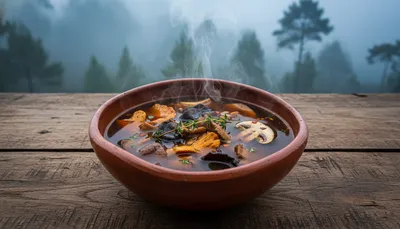
Traditional Sopa de Hongos Recipe: Oaxacan Wild Mushroom Soup
When you envision traveling to Mexico, you probably picture sun-drenched beaches or dusty agave fields. But high in the Sierra Norte mountains of Oaxaca, the world looks—and smells—very different. Here, tall pines disappear into the mist, the air is remarkably cold, and the scent of woodsmoke drifts from every cabin chimney.
In this climate, soup isn’t just a starter; it is a necessity.
Specifically, during the rainy season (July through September), the damp forest floor of the Pueblos Mancomunados explodes with life. This is when you eat Sopa de Hongos. It is a rustic, deeply savory wild mushroom soup that tastes exactly like the cloud forest itself—earthy, herbal, and warming.
While this dish is the traditional reward for hikers traversing the routes detailed in our Ultimate Guide to Hiking the Pueblos Mancomunados, you can recreate the magic in your own kitchen with the right technique.
The “Mushroom Capital” Connection: Why This Soup Matters
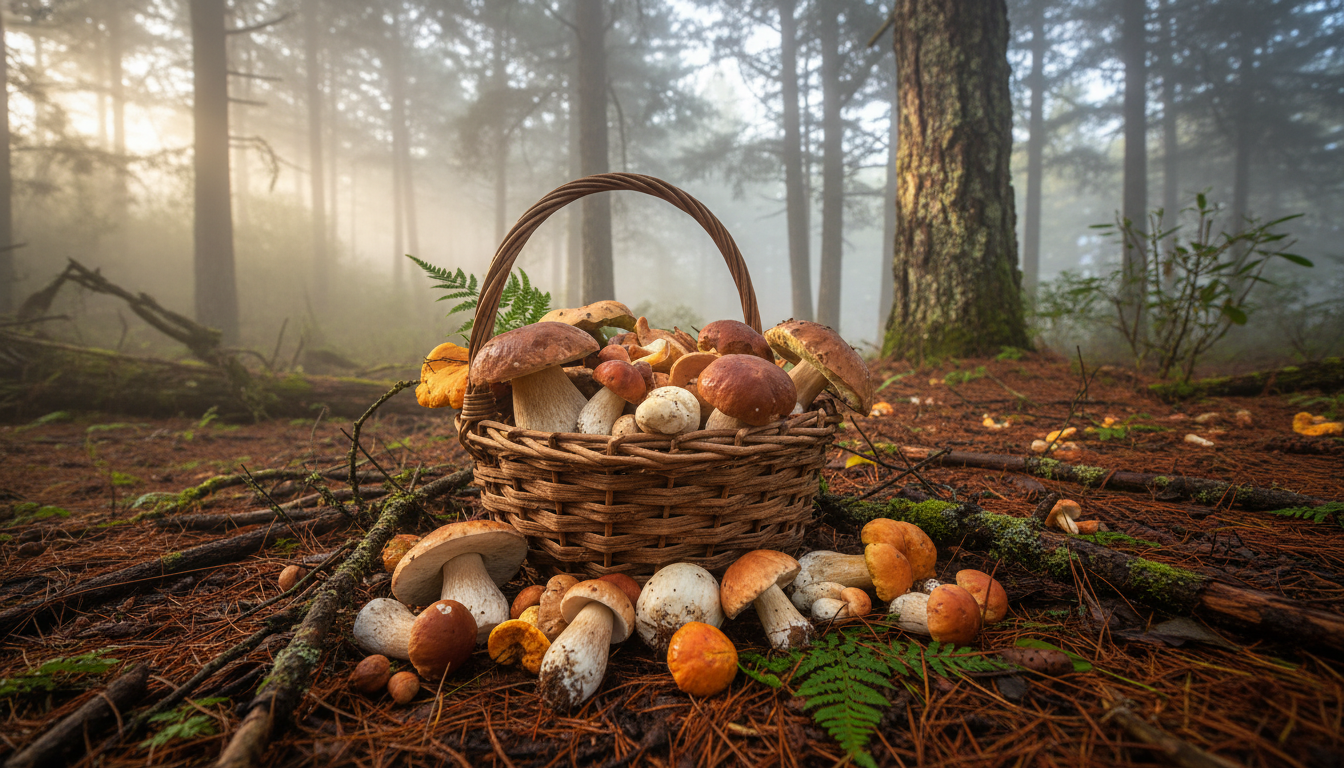
Many recipes will tell you this is simply “Oaxacan.” However, the true spiritual home of this dish is Cuajimoloyas. Sitting at nearly 3,200 meters (10,500 feet) above sea level, this small town is recognized as the mycological epicenter of the region.
The biodiversity here is staggering. According to the Government of Mexico’s agricultural records, the Sierra Norte boasts over 400 species of wild fungi. This abundance gave birth to the Feria Regional de Hongos Silvestres (Regional Wild Mushroom Fair), held every July or August.
During the festival, locals and visitors don’t just eat; they learn. Guides from Expediciones Sierra Norte lead groups into the dense woods to identify the harvest, distinguishing the prize-winning Boletus edulis (Penny Bun) from the deadly Amanita bisporigera (Destroying Angel).
Pro Tip: Locals often dehydrate their surplus finds. This concentrates the flavor intensely. If you want to cook like a serrano (mountain dweller), using dried mushrooms is actually better than using bland fresh ones.
To maximize your chances of tasting these fungi fresh from the soil, check out our Cuajimoloyas travel guide for the best times to visit.
Understanding Oaxacan Mushroom Soup Ingredients
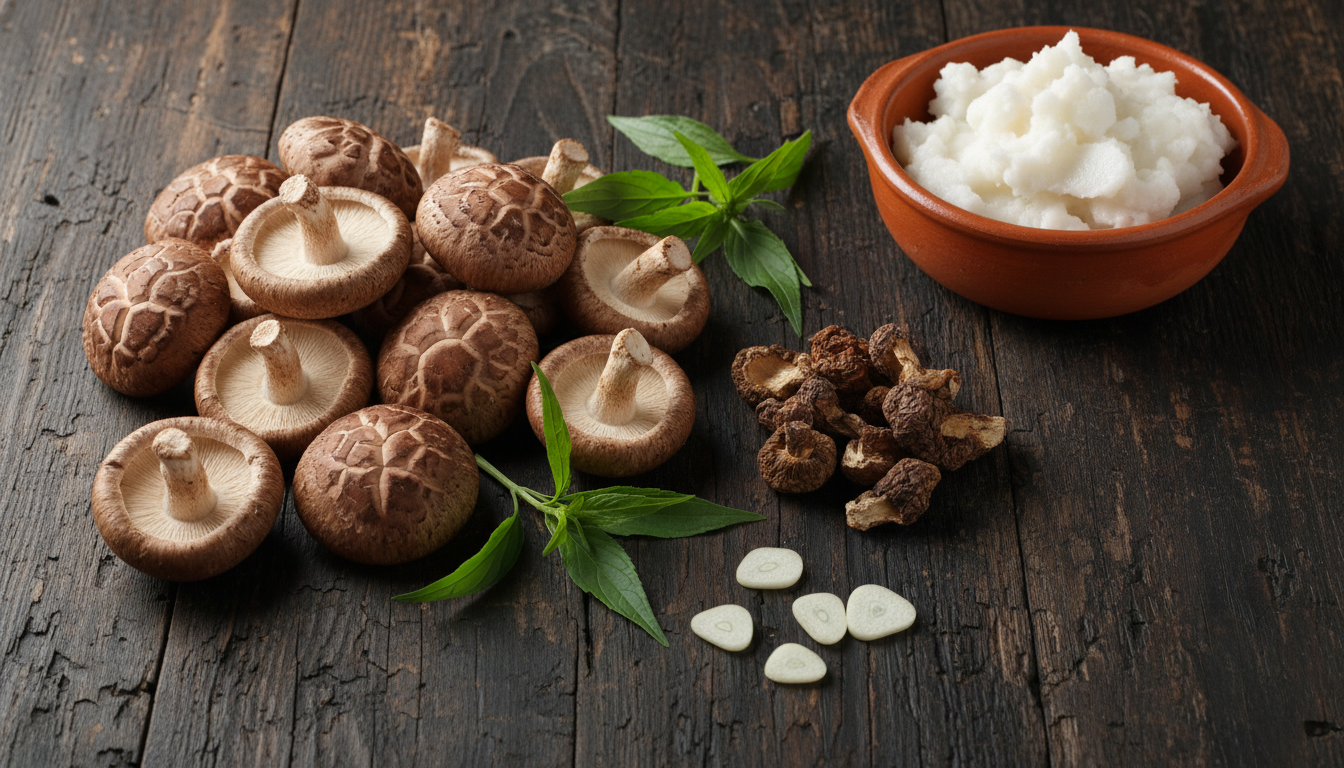
This recipe lives or dies by the quality of your fungi. The biggest mistake home cooks make is using generic white button mushrooms. They contain too much water and offer very little flavor, creating what chefs call an “Umami Deficit.”
The Authentic Varieties vs. Substitutes
In the mountains, cooks use stars like Hongo de Pan (Porcini), Hongo Yema (Caesar’s Mushroom), and the stunning blue Hongo Azul. You can explore these species via Biodiversity Oaxaca.
Since you likely cannot forage for Hongo Azul at your local supermarket, use this substitution strategy to mimic the “forest floor” profile:
- Fresh Shiitake: Provides the necessary earthiness and chewy texture.
- Cremini (Baby Bella): Adds deeper color than white buttons.
- Dried Porcini: This is the secret weapon. You must rehydrate them and use the soaking liquid as your stock.
The Holy Trinity of Flavor
Beyond the mushrooms, three elements define the Oaxacan profile:
- Epazote: This pungent herb is mandatory. If using fresh sprigs, slap the leaves between your hands before adding them to the pot to release the oils.
- Garlic: Slice it thinly rather than mincing it. You want sweet, golden slivers, not burnt garlic grit.
- Fat: Traditionally, this soup starts with a spoon of pork lard (manteca). The fat molecules carry the mushroom flavor better than vegetable oil, though olive oil is an acceptable vegetarian substitute.
Traditional Sopa de Hongos Recipe
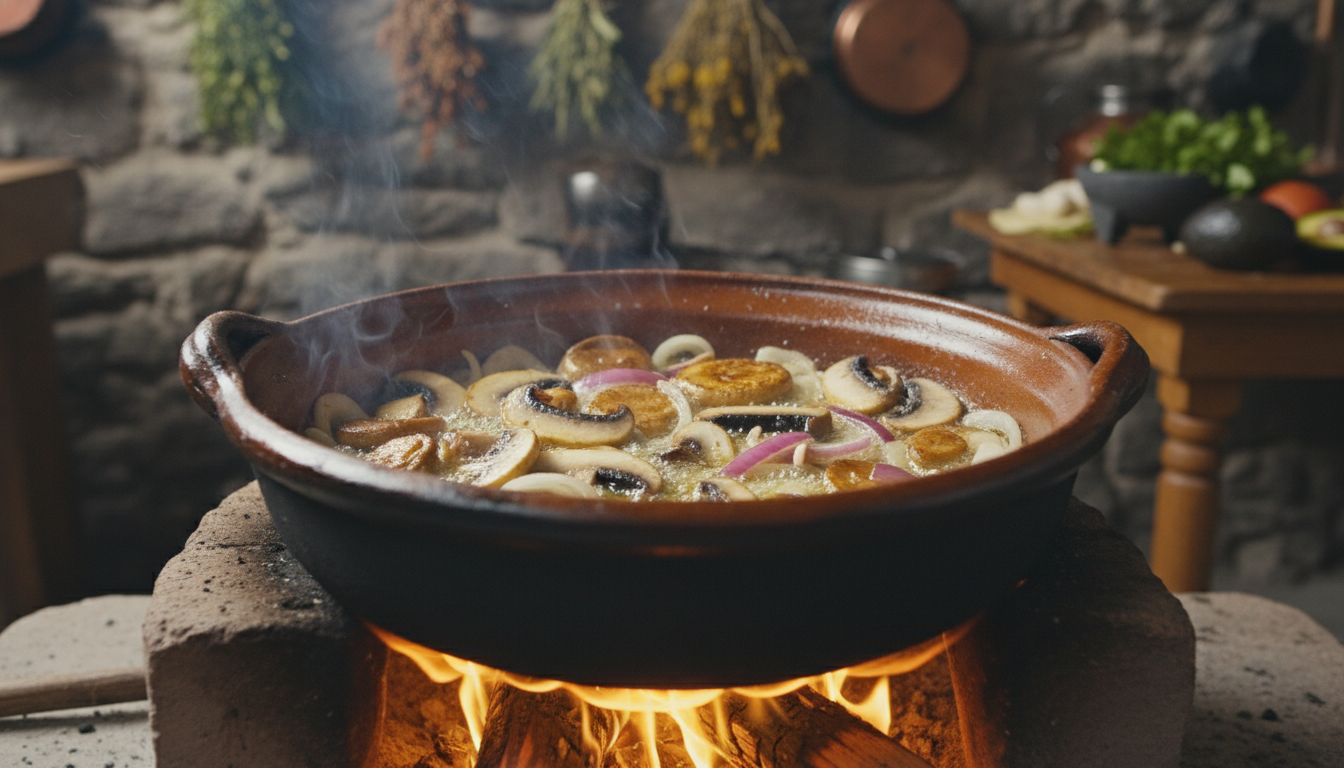
- Style: Caldo (Clear Broth). Do not add cream.
- Prep Time: 20 minutes
- Cook Time: 25 minutes
- Total Time: 45 minutes
- Yield: 4 Servings
- Recommended Equipment: Cazuela de Barro (Clay Pot) for authentic heat retention.
Ingredients List
- 1 lb Mixed Mushrooms (Shiitake, Cremini, Oyster), stems removed and caps sliced thick.
- 1 oz Dried Porcini Mushrooms.
- 1 cup Boiling water (for soaking Porcini).
- 2 tbsp Lard (Manteca) or high-quality vegetable oil.
- ½ White Onion, finely diced.
- 3 Cloves Garlic, thinly sliced.
- 2 Roma Tomatoes, chopped (optional, but traditional for color).
- 5 cups Water (or very light vegetable broth—avoid strong chicken stock which overpowers the fungi).
- 2 sprigs Fresh Epazote (or 1 tbsp dried).
- Salt to taste.
Instructions
Step 1: Careful Cleaning
According to culinary authorities like Larousse Cocina, you should avoid washing mushrooms under running water, as they act like sponges and become slimy. Instead, use a damp cloth or a soft brush (brocha) to wipe away the dirt.
Step 2: The Sofrito
Soak the dried porcini in the cup of boiling water for 15 minutes. Remove them, chop them roughly, and save the black liquid (strain it through a coffee filter to remove grit).
Heat the lard in your Cazuela de Barro over medium heat. Sauté the onion and garlic until the onion is translucent. Add the tomato (if using) and cook for 3 minutes.
Crucial Step: Add the fresh and rehydrated mushrooms now. Allow them to sauté in the fat for 5-7 minutes. You want them to brown slightly and release their juices before you add the water.
Step 3: The Broth
Pour in the reserved porcini soaking liquid and the 5 cups of fresh water. Bring the mixture to a boil, then immediately drop the heat to a low simmer.
Step 4: Infusion
Toss in the Epazote sprigs. Let the soup simmer gently for 20 minutes. Do not boil aggressively, or you will break up the delicate mushrooms. Season generously with salt only at the very end.
Variations: Dumplings and Chiles
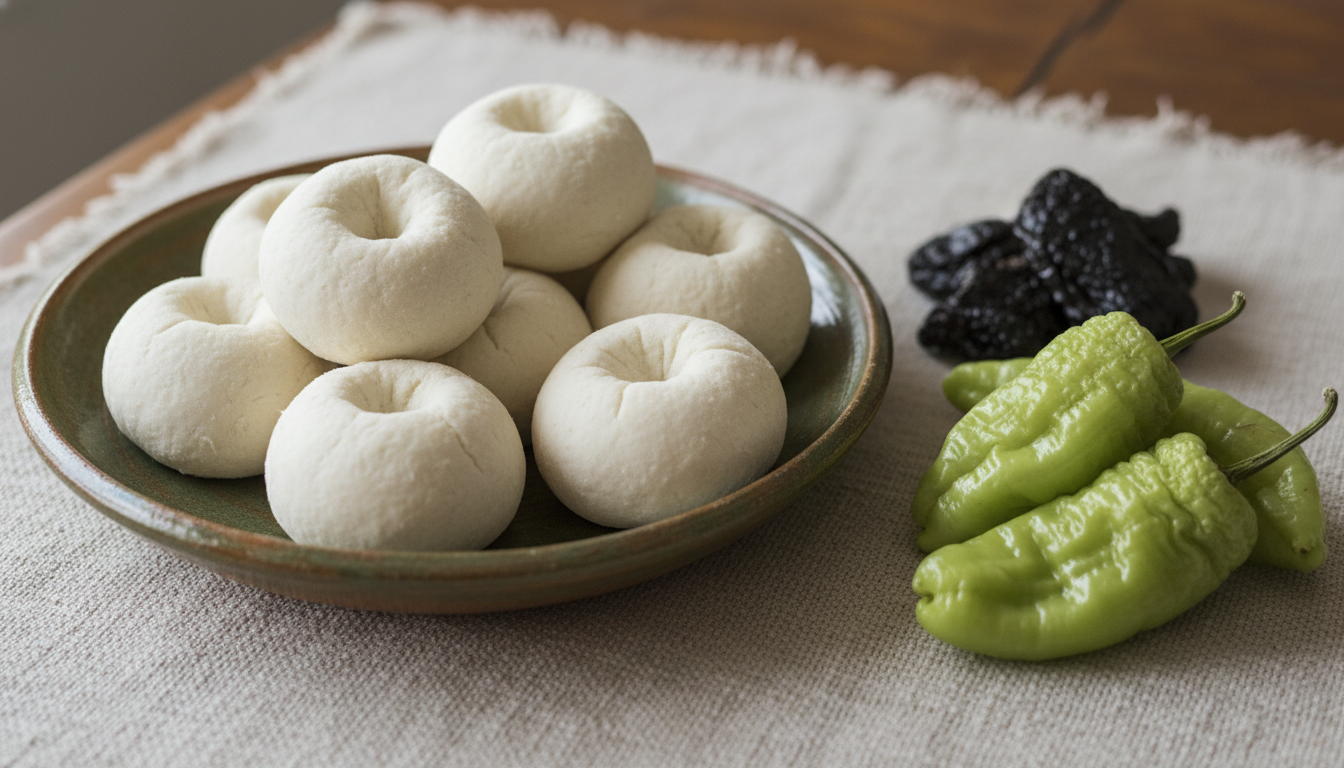
To elevate this from a starter to a main course, you can draw inspiration from trusted cooks like Mely Martinez and add dumplings.
- Chochoyotes: These are small balls of corn dough (masa) with a dimple pressed into the center. Drop them into the simmering broth for the final 10 minutes. The dimple catches the soup, making every bite explosive.
- Pasilla Mixe: If you can find it, toast a dried Pasilla Mixe chile and add it to the broth. Grown in the neighboring Mixe region, this chile adds a comprehensive smokiness that mimics bacon.
- Chile de Agua: For heat, locals usually blister a light-green Chile de Agua over an open flame and eat it on the side between spoonfuls of soup.
Note: Do not confuse this with Sopa de Guias. While distinct, Sopa de Guias focuses on squash vines and corn, whereas this recipe is a celebration of the kingdom of fungi.
Where to Eat the Real Thing

If you want to taste the reference quality version of this dish, skip the high-end restaurants in Oaxaca City and head to the community kitchens (comedores) in the mountains.
- In Cuajimoloyas: The Comedor Regional sets the gold standard. A steaming bowl here costs approx 60-80 MXN—an incredible value given the freshness of the ingredients.
- In Latuvi: The ecosystem changes slightly here. The soup at Comedor de Latuvi often carries subtle sweet notes, likely influenced by the apple and pear orchards surrounding the village.
Dining Protocol: You will be served a large, semi-toasted Tlayuda (tortilla) with your soup. Do not try to roll it. Break it into jagged “crackers” and drop them into the broth to soften.
The crisp air surrounding the Centro Ecoturístico Cabañas Latuvi makes those cabins the ideal place to enjoy this hot bowl next to a fireplace.
Conclusion
Cooking Sopa de Hongos at home offers a glimpse into the flavors of the Sierra Norte, but the true ingredient you cannot replicate is the atmosphere of the cloud forest. The mist, the silence, and the smell of pine needles make the soup taste infinitely better at the source.
Ready to hike the trails where these ingredients grow wild? Start planning your culinary trek with our ultimate guide to hiking the Pueblos Mancomunados.